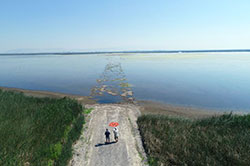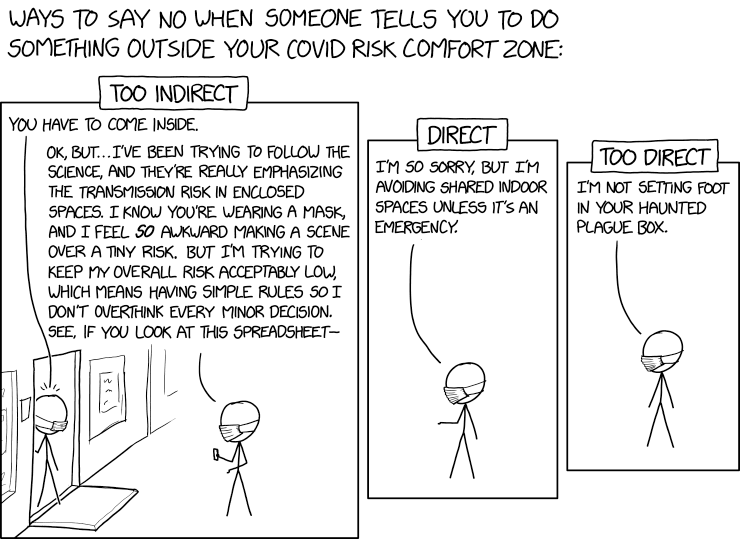How far we’ve come: A reflection by outgoing Delta Lead Scientist Dr. John Callaway
 He writes, “As my three years as Delta lead scientist come to a close, I must say that I feel incredibly lucky to have had the chance to work in the Sacramento-San Joaquin Delta and to learn from such an outstanding group of people who are committed to improving the region: the Delta Stewardship Council and Delta Science Program; the Delta Independent Science Board (Delta ISB); the Delta Plan Interagency Implementation Committee (DPIIC) member agencies; and all of the non-governmental entities, academia, and stakeholders involved in Delta science and management. Despite the ongoing challenges that remain in the Delta, we have made progress over the last three years. I say we because it’s the exceptional staff and broader Delta community who have made such progress possible. Whether it be through collaborating, funding science, integrating social science, embarking on climate change initiatives, conducting independent peer reviews, or communicating scientific findings, oh how far we’ve come. ... ” Continue reading at the Delta Stewardship Council website here: How far we’ve come: A reflection by outgoingDelta Lead Scientist Dr. John Callaway
He writes, “As my three years as Delta lead scientist come to a close, I must say that I feel incredibly lucky to have had the chance to work in the Sacramento-San Joaquin Delta and to learn from such an outstanding group of people who are committed to improving the region: the Delta Stewardship Council and Delta Science Program; the Delta Independent Science Board (Delta ISB); the Delta Plan Interagency Implementation Committee (DPIIC) member agencies; and all of the non-governmental entities, academia, and stakeholders involved in Delta science and management. Despite the ongoing challenges that remain in the Delta, we have made progress over the last three years. I say we because it’s the exceptional staff and broader Delta community who have made such progress possible. Whether it be through collaborating, funding science, integrating social science, embarking on climate change initiatives, conducting independent peer reviews, or communicating scientific findings, oh how far we’ve come. ... ” Continue reading at the Delta Stewardship Council website here: How far we’ve come: A reflection by outgoingDelta Lead Scientist Dr. John Callaway
Crystal Compass: Chinook may rely on magnetic minerals to navigate
“Many animals possess sensory abilities that defy the human imagination. For example, magnetoreception, or the ability to perceive magnetic fields, is a sense found in some mammals, birds, reptiles, fish, and invertebrates. In many species, including Chinook salmon (Oncorhynchus tshawytscha), this sense is an important tool that allows for navigation across great distances. However, the mechanisms of this internal compass remain a bit of a mystery, particularly in fish. To learn what allows salmon to use this navigational superpower, a recent study exposed juvenile Chinook to a strong magnetic pulse and evaluated their subsequent behavior (Naisbett-Jones et al. 2020). The resulting analysis provided insight into the inner workings of fish magnetoreception. … ” Read more from FishBio here: Crystal Compass: Chinook may rely on magnetic minerals to navigate
Fish surveys in the estuary: the whole is greater than the sum of its parts
“The San Francisco Estuary is a dynamic and altered estuary that supports a high diversity of fishes, both native and non-native. These species have substantial recreational, commercial, and intrinsic value to people. Since the 1950s, various agencies and UC Davis have established long-term surveys to track the status of fish populations. These surveys help scientists understand how fishes are responding to natural- and human-caused changes to the Estuary. Each survey has strengths and weaknesses due to differences in sampling gear and effort, program duration, consistency of sampling, and area sampled. Because of this, it is challenging to understand drivers of change when looking at only a single survey. ... ” Read more from the California Water Blog here: Fish surveys in the estuary: the whole is greater than the sum of its parts
One fish, two fish – Using mark-recapture to estimate population size
“Have you ever reeled in a fish and seen a strange tag sticking off it? Chances are, that fish was part of a mark-recapture study. Capture-mark-recapture techniques (called “mark-recapture” for short) are used by fisheries biologists and managers to answer the question, “How many fish are there?” One of the biggest challenges in fisheries management is estimating the size of fish populations, but this information (also called abundance) is important for conservation and managing sustainable fisheries. In some cases, it is relatively easy to know a population’s size. For example, fish hatcheries know almost exactly how many adults they bring in for their broodstock, and they usually have a pretty good idea how many offspring are produced. … ” Read more from FishBio here: One fish, two fish – Using mark-recapture to estimate population size
Department of Fish and Wildlife drone program provides a bird’s eye view for environmental scientists
 “In March 2019, there was late winter flooding at the Yolo Bypass Wildlife Area in Yolo County near Davis. Wildlife area supervisor Joe Hobbs wanted to check a series of old railroad trestle mounds to make sure there was no wildlife stranded there. In previous years when there had been flooding, staff went out on a boat to check the trestle mounds. But that approach had downsides: From a boat, it could be difficult to see exactly what was on the mounds, and the sound of the boat’s motor could potentially spook the animals. Hobbs saw an opportunity to utilize the California Department of Fish and Wildlife’s (CDFW) drone program, a service offered by CDFW’s Geographic Information Systems (GIS) Unit within the Biogeographic Data Branch. He submitted a project request which was ultimately granted. … ” Read more from the Department of Fish and Wildlife here: Department of Fish and Wildlife drone program provides a bird’s eye view for environmental scientists
“In March 2019, there was late winter flooding at the Yolo Bypass Wildlife Area in Yolo County near Davis. Wildlife area supervisor Joe Hobbs wanted to check a series of old railroad trestle mounds to make sure there was no wildlife stranded there. In previous years when there had been flooding, staff went out on a boat to check the trestle mounds. But that approach had downsides: From a boat, it could be difficult to see exactly what was on the mounds, and the sound of the boat’s motor could potentially spook the animals. Hobbs saw an opportunity to utilize the California Department of Fish and Wildlife’s (CDFW) drone program, a service offered by CDFW’s Geographic Information Systems (GIS) Unit within the Biogeographic Data Branch. He submitted a project request which was ultimately granted. … ” Read more from the Department of Fish and Wildlife here: Department of Fish and Wildlife drone program provides a bird’s eye view for environmental scientists
Furry engineers: sea otters in California’s estuaries surprise scientists
“When Brent Hughes started studying the seagrass beds of Elkhorn Slough, an estuary in Monterey Bay on California’s central coast, he was surprised by what he found. In this highly polluted estuary, excessive nutrients from agricultural runoff spur the growth of algae on seagrass leaves, which kills the plants. Yet in 2010, Hughes noticed that the seagrass beds were thriving. It did not make sense. “This is the highest nutrient concentration that I had ever seen on the planet,” says Hughes, a biologist at Sonoma State University. “Any model would suggest there should be no seagrass there and yet it was expanding.” ... ” Read more from The Guardian here: Furry engineers: sea otters in California’s estuaries surprise scientists
 Point Blue Quarterly: Tales of the unexpected: Scientific surprises that led to conservation insight
Point Blue Quarterly: Tales of the unexpected: Scientific surprises that led to conservation insight
“The theme for the new issue of the Point Blue Quarterly is Tales of the Unexpected, and it’s one we’ve been wanting to take on for a long time. The nature of conservation science lends itself to both unexpected discoveries in complex datasets and unexpected experiences in the field. But in March of 2020, we all experienced something unexpected when COVID-19 spread around the world, disrupting our lives. We knew this was the right time to dedicate an issue to responding to change and unexpected developments. Science, like life, is full of the unexpected. From surprising information about our regional birds revealed by decades of data to a mystery solved under our Marine Lab microscopes, the stories in this Quarterly show how scientific curveballs can lead to new insight or trigger a new line of inquiry. … ” Click here to read this publication.
Featured scientist: Aaron Johnson
“Aaron Johnson is an environmental scientist in CDFW’s Bishop office, in Inyo County. A Bay Area native, Aaron spent much of his childhood doing two things – exploring the East Bay hills above his hometown of Albany, and tagging along with his dad, who was a photographer for the Nature Conservancy. Aaron earned an environmental studies degree at UC Santa Cruz, then worked for a local land trust, the US Department of Agriculture and California State Parks before settling in with CDFW in 2015. Today his work involves land management and invasive plant management on the 22,000 acres of CDFW wildlife areas and ecological reserves in Inyo and Mono counties. … ” Read more from the Department of Fish and Wildlife here: Featured scientist: Aaron Johnson
Tiny endangered shrimp may get big hand from environmental DNA testing
“The San Diego fairy shrimp, a miniscule, puddle-dwelling crustacean that provides food for migrating birds, is nearing extinction as humans continue to encroach on its wetlands habitat. But a new approach to tracking the shrimp’s population numbers may give conservationists a boost in protecting the species, according to a UCLA study. The fairy shrimp lives and breeds in vernal pools, puddles that appear after rains and dry up within a couple months. These pools are only about 6 inches deep and 10 to 30 feet long, yet they harbor a tremendous diversity of plants and animals, many of which provide a critical food resource that sustains waterfowl and other birds as they make their way across California. … ” Read more from UCLA here: Tiny endangered shrimp may get big hand from environmental DNA testing
Alaska’s salmon are getting smaller, affecting people and ecosystems
“The size of salmon returning to rivers in Alaska has declined dramatically over the past 60 years because they are spending fewer years at sea, according to a new study led by researchers at the University of California, Santa Cruz, and the University of Alaska Fairbanks. Salmon are critically important to both people and ecosystems in Alaska, supporting commercial and subsistence fisheries and transporting nutrients from the ocean to inland areas, fertilizing the ecosystems in and around the rivers where they spawn. Smaller salmon provide less food for people who depend on them, less value for commercial fishers, and less fertilizer for terrestrial ecosystems. … ” Read more from Science Daily here: Alaska’s salmon are getting smaller, affecting people and ecosystems
A watershed moment for US water quality
“A new federal rule that determines how the Clean Water Act is implemented leaves millions of miles of streams and acres of wetlands unprotected based on selective interpretation of case law and a distortion of scientific evidence, researchers say in a new publication. In a Policy Forum article published in the Aug. 14 issue of Science, the researchers assert that the Navigable Waters Protection Rule undermines the spirit — if not the letter — of the Clean Water Act by protecting only waters that have a permanent hydrologic surface connection to rivers, lakes and other large “navigable” bodies of water. Also omitted from consideration is maintaining the integrity of the biological and chemical quality of the nation’s waters, protections that are explicitly called for in the Clean Water Act. … ” Read more from Science Daily here: A watershed moment for US water quality
The tropics are expanding, and climate change is the primary culprit
“Earth’s tropics are expanding poleward and that expansion is driven by human-caused changes to the ocean, according to new research. The tropics wrap around Earth’s middle like a warm, wet belt. This part of the globe gets the most direct sunlight throughout the year and is characterized by high average temperatures and heavy rainfall. In contrast to the tropics’ lush interior, however, this region’s edges are hot and parched. Scientists have noticed for the past 15 years that these arid bands are expanding toward the poles into regions like the Mediterranean, southern Australia and southern California. Interestingly, these dry areas have expanded more in the Southern Hemisphere than the Northern Hemisphere and researchers have struggled to pinpoint exactly what is driving the trend. … ” Read more from Newswise here: The tropics are expanding, and climate change is the primary culprit
About Science News and Reports: This weekly feature, posted every Thursday, is a collection of the latest scientific research and reports with a focus on relevant issues to the Delta and to California water, although other issues such as climate change are sometimes included. Do you have an item to be included here? Submissions of relevant research and other materials is welcome. Email Maven




